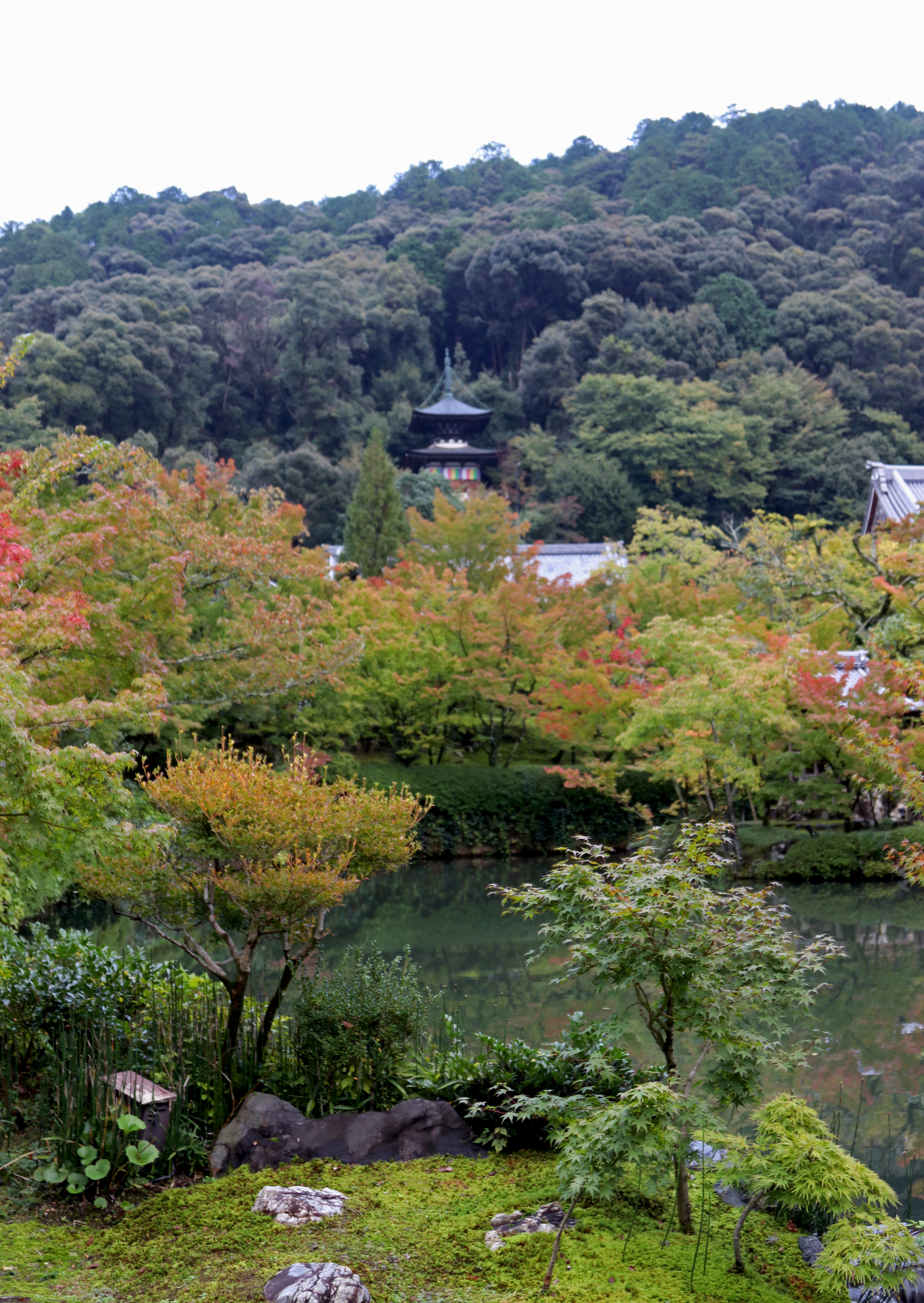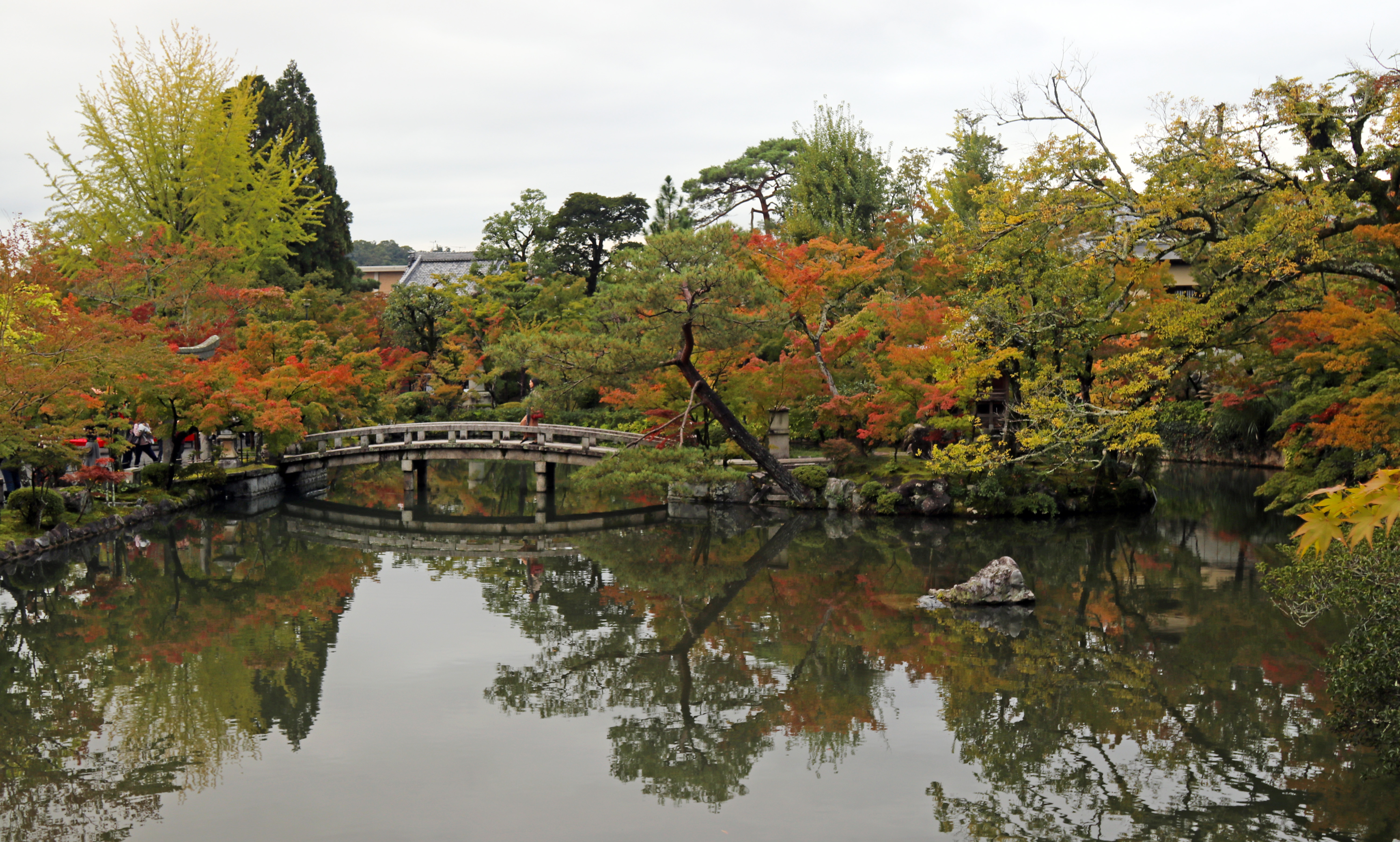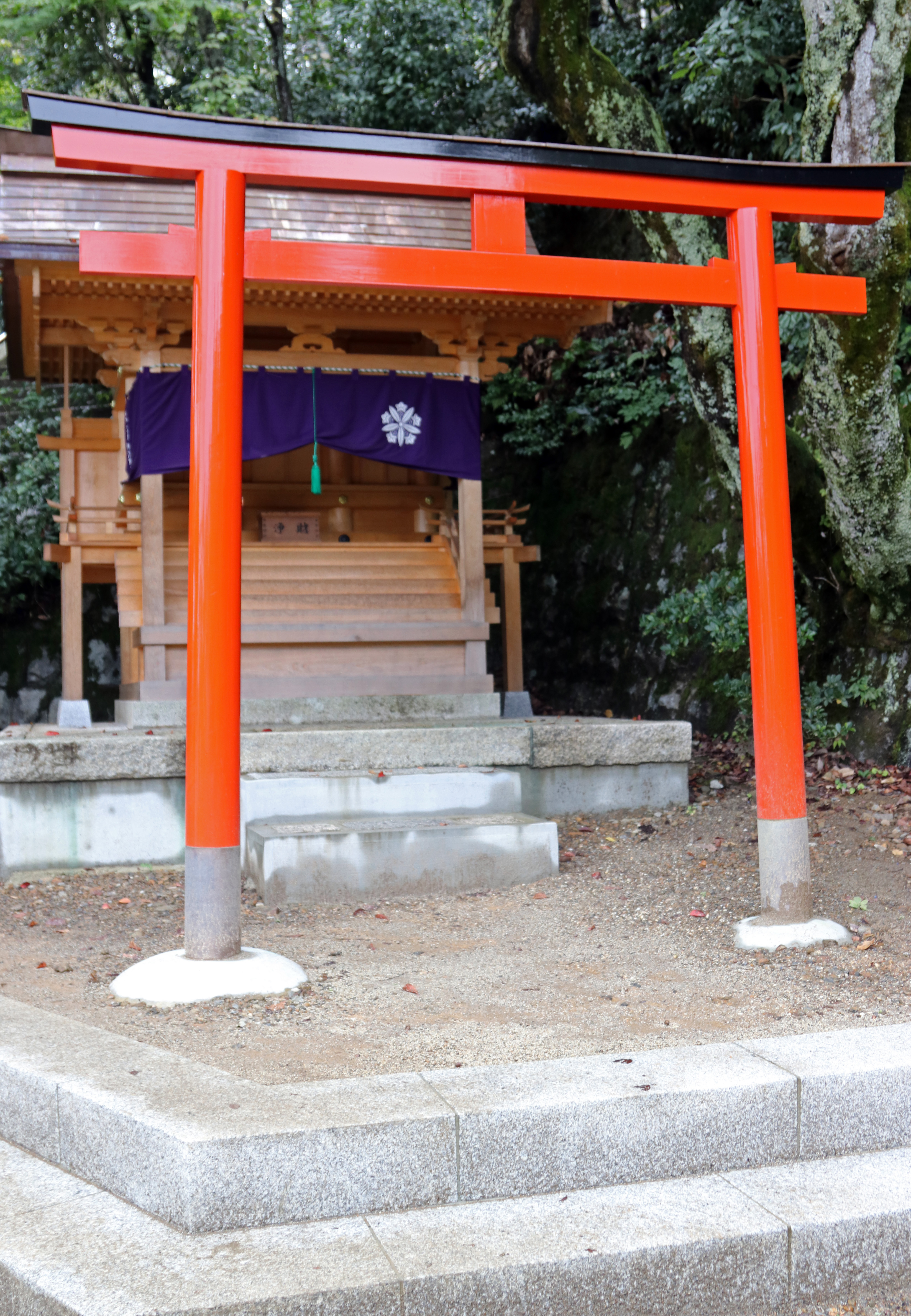Ekiando Temple
Once we had come to the southern end of the Philosopher’s Path we came across Eikando Temple, with its grounds and garden being stunning especially with the autumn colours, which turns out the temple is very famous for. The temple was formally known as Zenrinji Temple and belongs to the Jodo sect of Japanese Buddhism. The temple has a long history of which there are a variety of buildings and a beautiful pond garden to explore.

Once we had entered Eikando’s stunning grounds, we walked around the impressive temple main building and followed the path which led to stairs that climbed up the mountain side to Eikando’s famous two story Tahoto Pagoda, which was nestled within the trees in the hillside, overlooking Kyoto. This turned out to be the ideal lunch stop, to have our sandwiches that we had purchased that morning from the Lawsons, one of Japans many convenience stores. As mentioned in our previous article, we often purchase our lunch in the morning, so to eat on the go, saving time and make the most of the day! It was certainly a peaceful and beautiful lunch stop, with a few other visitors also taking advantage of the nice spot!
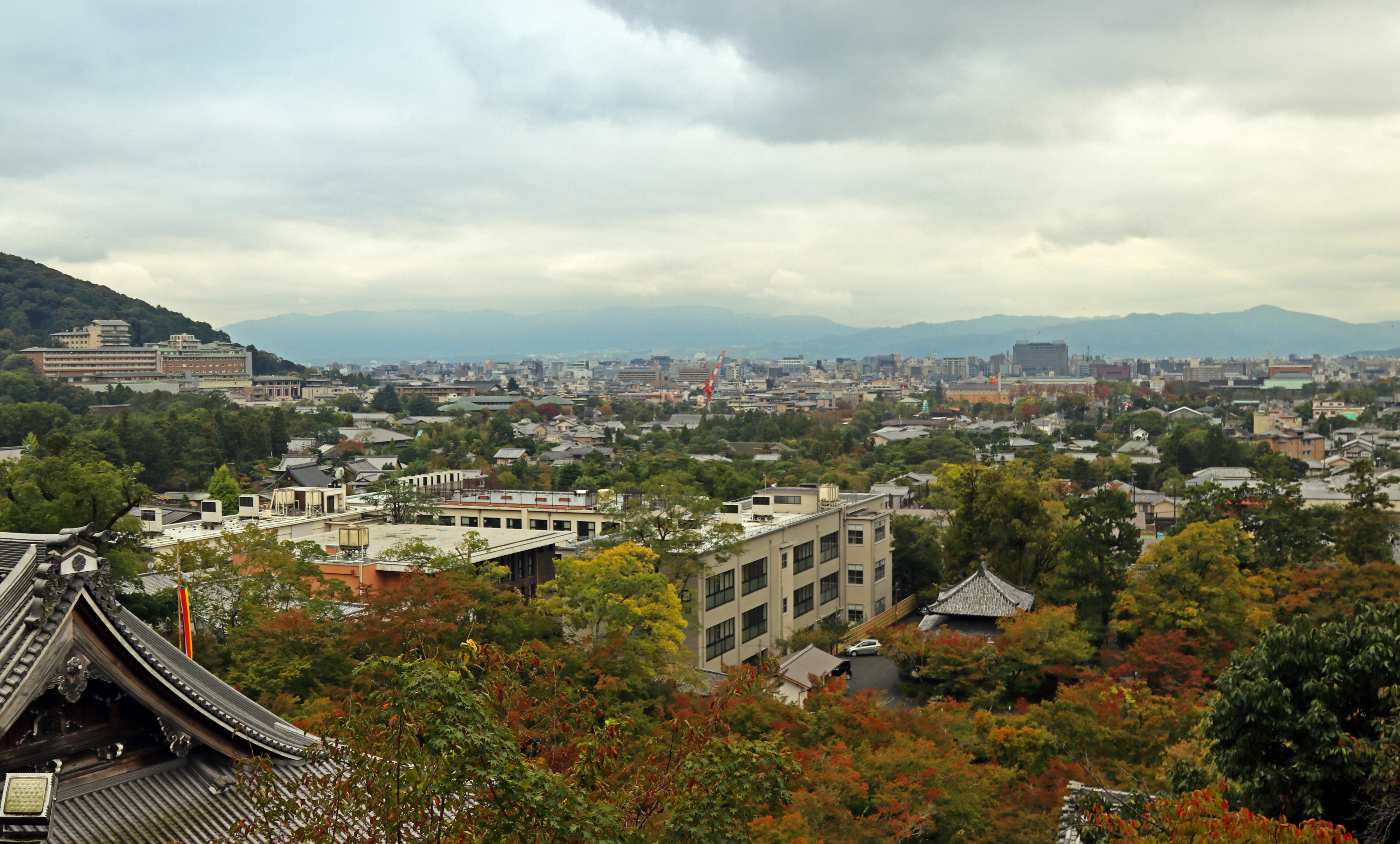
Once back down from the pagoda we then walked around Eikando’s attractive Hojo pond and garden, which consisted of small streams and waterfalls flowing into the main pond, which had a bridge going across it, this connected a central island of which there was a small shrine. The garden’s trees and shrubs were particularly beautiful with autumn colours.

As well as being located
at the southern end of the Philosopher’s path, Eikando is only 15-20 minute
walk from the nearest subway station, which takes 20 minutes from Kyoto
Station, or is a 5 minute walk from the nearest bus stop, which take 35 minutes
from Kyoto Station.
Please find our other Kyoto articles in the 'Kyoto' section of the website.
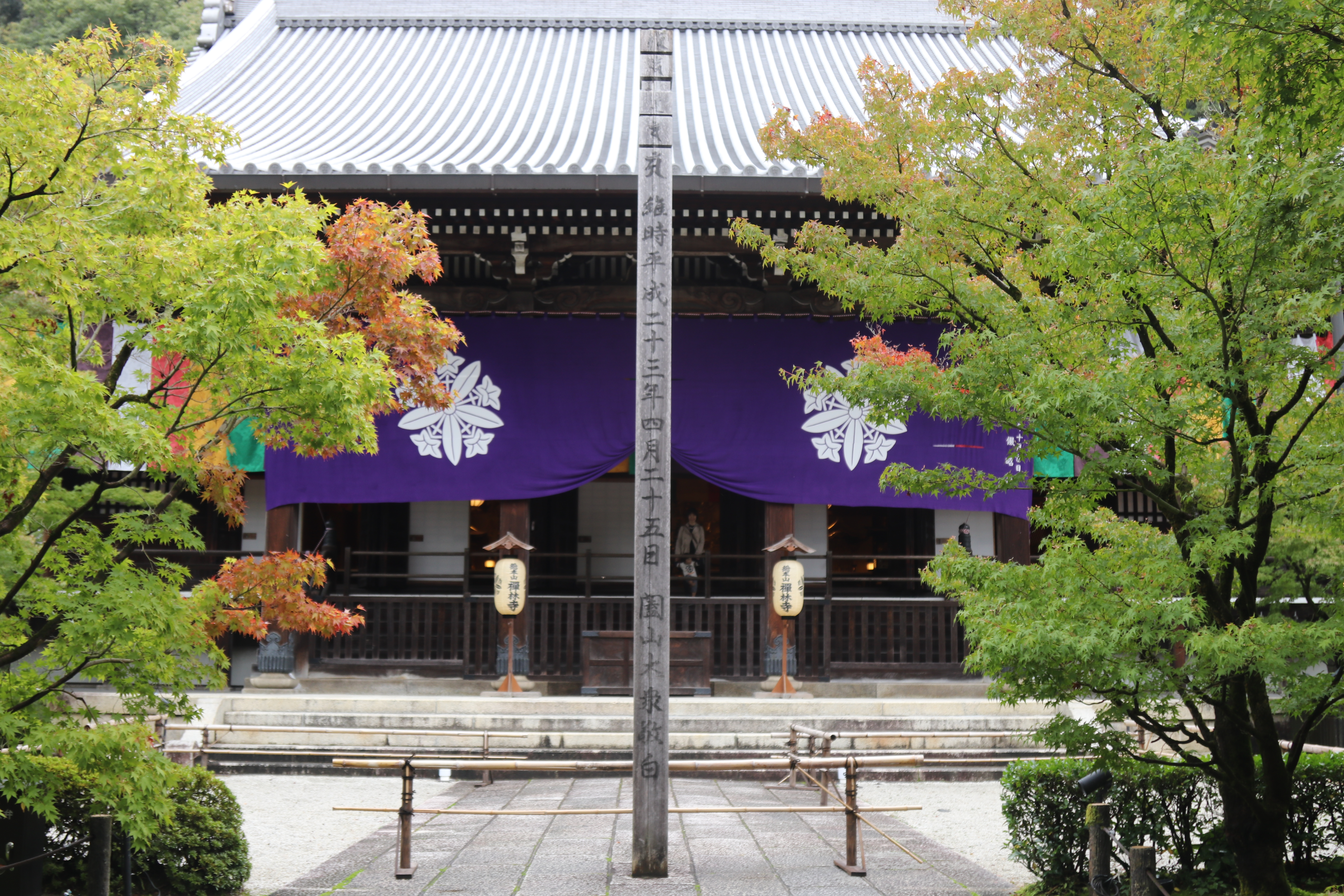
The temple was converted
from a villa in the Heian Period (710-1185) which was donated by a court noble
to his local priest. The temples original name was Zenrinji “temple in a calm grove”.
In the 11th century, the temple had a popular head priest named
Eikan, after which the temple derived its current popular name Eikando. Eikan
is credited with acquiring the temples main object of worship, an unusual
statue of the Amisda Buddha with his head turned sidewards. Which according to
legend Eikan was walking through the temple one day, when the statue, which was
originally facing forward, tuned its head towards the priest and talked to him!
